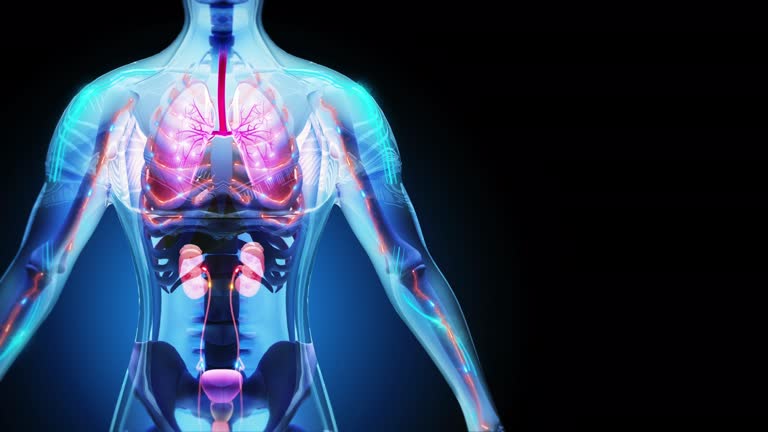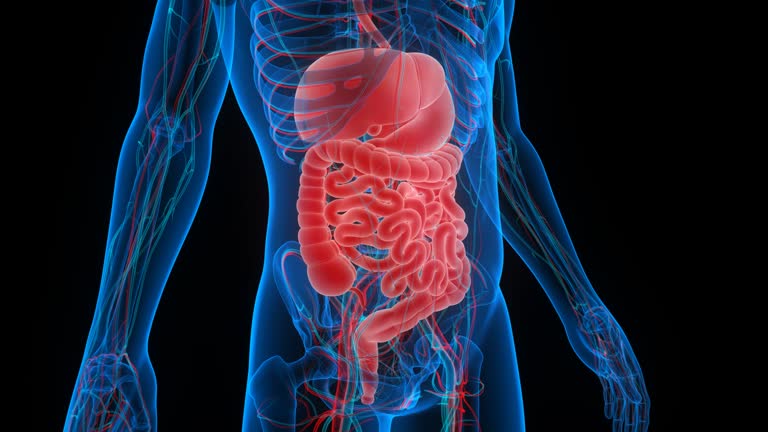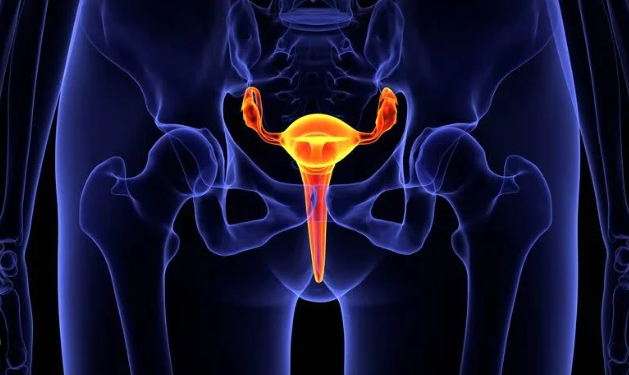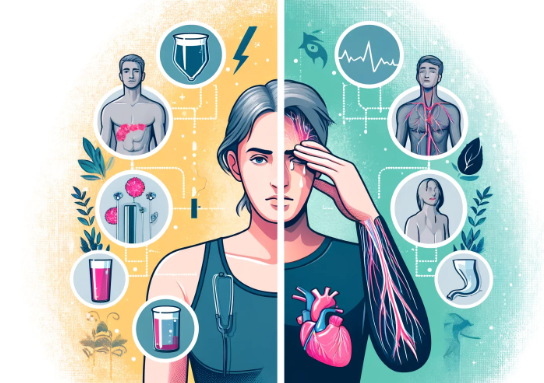Anatomy & Physiology II
Topic outline
-
Welcome to the most exciting journey you’ll ever take — inside the human body!
This course provides a comprehensive understanding of the human body's structure and function by focusing on how various systems work individually and in harmony to sustain life. You will explore the anatomy (form) and physiology (function) of key organ systems and learn how they contribute to the body's overall health and homeostasis.We will examine the digestive system and how it processes nutrients, the urinary system in waste removal and fluid balance, the endocrine system as a regulator of hormones, and the reproductive system, which ensures species continuation. The lymphatic system will be explored for its role in immune defense and fluid regulation, while acid-base balance is introduced as a crucial component of internal chemical stability. In addition, the integumentary system will be covered as the body's first line of defense, along with the special sense organs that allow us to interact with the environment.
Throughout the course, emphasis will be placed on system integration and how dysfunction in one area can affect the whole body. You will gain an appreciation for the complexity and elegance of the human body and its incredible ability to adapt and maintain balance.
Ready to dive in? Let’s turn curiosity into knowledge — and have a blast doing it!
-

The digestive system is a complex network of organs responsible for breaking down food, absorbing nutrients, and eliminating waste from the body. Its primary function is to convert the food we eat into energy and essential molecules needed for growth, repair, and overall bodily functions. The digestive system works like a processing factory, transforming food into usable nutrients while efficiently discarding waste. Therefore, it is an essential to understand its structure and function to comprehend nutrient absorption, metabolic processes and related pathologies.
1.1 Topic Learning Outcomes
By the end of this lesson, you should be able to:
1.1.1 Describe the main organs and functions of digestive system
1.1.2 Explain the basic physiological process of digestive system
1.1.3 Identify the enzymes and chemical activities involved in the system
1.2 List of Subtopics
1.2.1 Main Organs of Digestive System
1.2.2 Main Functions of Digestive System
1.2.3 Microscopic of Digestive System
1.2.4 Mouth
1.2.5 Pharynx
1.2.6 Esophagus
1.2.7 Stomach
1.2.8 Small Intestine
1.2.9 Large Intestine
1.2.10 Pancreas
1.2.11 Liver
1.2.12 Gallbladder
1.2.13 Phases of Digestion1.3 Video LectureWatch the video assigned for this topic: The Digestive System(Duration: 9:38 mins)-
Topic: Digestive System
Objective: Collaborate in small groups to discuss key questions about digestion, ensuring clear explanations and respectful dialogue.
Instruction: Divide among yourself into groups. Discuss within your group members based on the following questions. Aim for clear, concise answers with examples, where needed.- How does the structure of the small intestine relate to its function in absorption?
- Compare the mechanical and chemical digestion, giving examples of each.
- Why is the stomach lining protected from its own acidic environment? What happens if this protection fails?
-

The urinary system is a vital physiological system responsible for filtering blood, removing waste, regulating fluid and electrolyte balance, and maintaining homeostasis in the body. Understanding its anatomy (kidneys, ureters, bladder, urethra) and physiology (filtration, reabsorption, hormonal control) is essential for grasping how our body maintains the balance.
2.1 Topic Learning Outcomes
By the end of this lesson, you should be able to:
2.1.1 Describe the main organs and functions of urinary system
2.1.2 Explain the basic physiological process of urinary system
2.1.3 Explain the process of urine formation
2.2 List of Subtopics
2.2.1 Main Organs of Urinary System
2.2.2 Main Functions of Urinary System
2.2.3 Structure of the Kidney
2.2.4 Nephron
2.2.5 Urine Formation
2.2.6 Evaluation of Kidney Function
2.2.7 Ureters
2.2.8 Urinary Bladder
2.2.9 Urethra
2.2.10 Micturition2.3 Video LectureWatch the video assigned for this topic: The Urinary System
(Duration: 10:10 mins)-
Topic: Urinary SystemObjective: Collaborate in small groups to discuss key questions about urinary system, ensuring clear explanations and respectful dialogue.
Instruction: Divide among yourself into groups. Discuss within your group members based on the following questions. Aim for clear, concise answers with examples, where needed.- Compare the functions of the proximal convoluted tubule and distal convoluted tubule.
- Why might a dehydrated person have darker, more concentrated urine?
- "Drinking more water always improves kidney function."
-

The human body interacts with its environment through five major senses: vision, hearing, taste, smell, and touch. Among these, the special sense organs—the eyes, ears, tongue, and nose—play a crucial role in detecting and processing sensory information. These highly specialized structures allow us to perceive light, sound, flavors, and odors, contributing to our survival and daily experiences. Any impairment in these systems can significantly impact quality of life, leading to conditions like blindness, deafness, or loss of taste. Understanding their anatomy and physiology is not only crucial for medical professionals but also helps us appreciate the delicate mechanisms behind human perception.
3.1 Topic Learning Outcomes
By the end of this lesson, you should be able to:
3.1.1 Describe the structures of special sense organs
3.1.2 Explain the main functions for each structures of special sense organs
3.1.3 Explain the basic physiological process of special sense organs
3.2 List of Subtopics
3.2.1 Introduction to Special Sense Organs
3.2.2 Olfaction
3.2.3 Gustation
3.2.4 Vision
3.2.5 Hearing & Equilibrium
3.2.6 General Senses3.3 Video LectureWatch the video assigned for this topic: Special Sense Organs
(Duration: 22:47 mins)-
Topic: Debate On Sensory Adaptations
Objective: Collaborate in small groups to discuss key questions about special sense organs, ensuring clear explanations and respectful dialogue.
Instruction: Divide among yourself into groups of Team Vision, Team Hearing, Team Smell and Team Taste. Each group will present arguments with anatomical/physiological evidence. Aim for clear, concise answers with examples, where needed.
Topic to Debate: "Which special sense is most vital for survival?"
-

The endocrine system is a complex network of glands and organs that regulate nearly every physiological process in the body by secreting hormones—chemical messengers that travel through the bloodstream to target tissues. Unlike the nervous system, which delivers rapid, short-term signals, the endocrine system orchestrates slower but prolonged responses affecting growth & development (e.g., growth hormone), metabolism (e.g., thyroid hormones, insulin), reproduction (e.g., estrogen, testosterone), stress response (e.g., cortisol, adrenaline) and homeostasis (e.g., calcium balance, water retention). This topic sets to bring you into deeper exploration of gland-specific functions, hormone pathways, and clinical correlations.
4.1 Topic Learning Outcomes
By the end of this lesson, you should be able to:
4.1.1 Identify the main glands of endocrine system
4.1.2 Describe the main hormones secreted by the glands of endocrine system
4.1.3 Describe the functions of each glands of endocrine system
4.1.4 Explain the basic physiological process of endocrine system
4.2 List of Subtopics
4.2.1 Introduction to Endocrine System
4.2.2 Hormones
4.2.3 Glands of Endocrine System
4.2.3.1 Pituitary Gland
4.2.3.2 Thyroid Gland
4.2.3.3 Parathyroid Gland
4.2.3.4 Adrenal Gland
4.2.3.5 Pineal Gland
4.2.4 Pancreas
4.2.5 Gonads
4.2.6 Thymus
4.2.7 Negative Feedback Mechanisms
4.2.8 Positive Feedback Mechanisms4.3 Video LectureWatch the video assigned for this topic: The Endocrine System
(Duration: 9:23 mins)-
Topic: Endocrine System
Objective: Collaborate in small groups to discuss key questions about endocrine system, ensuring clear explanations and respectful dialogue.
Instruction: Divide among yourself into groups. Discuss within your group members based on the following questions. Aim for clear, concise answers with examples, where needed.- Why is the pituitary gland called the "master gland"? Debate whether this term is still accurate.
- Explain how thyroxine (T4) affects metabolism. What happens in hypothyroidism vs. hyperthyroidism?
- Describe the opposing roles of insulin and glucagon in blood glucose regulation. How does diabetes disrupt this balance?
-

The male reproductive system is a complex network of organs and hormones responsible for producing, maintaining, and transporting sperm and male sex hormones. Key organs include the testes, epididymis, vas deferens, and accessory glands like the prostate. Understanding its structure and function is essential for comprehending human reproduction, fertility, and overall male health. Let’s examine their structure, function, and role in human reproduction.
5.1 Topic Learning Outcomes
By the end of this lesson, you should be able to:
5.1.1 Identify the male reproductive organs
5.1.2 Describe the functions for each of the organs
5.1.3 Describe semen and spermatogenesis process
5.2 List of Subtopics
5.2.1 Introduction to Reproductive System
5.2.2 Male Reproductive Organs
5.2.2.1 Scrotum
5.2.2.2 Testes
5.2.2.3 Epididymis
5.2.2.4 Ductus Deferens
5.2.2.5 Urethra
5.2.2.6 Seminal Vesicles
5.2.2.7 Prostate Gland
5.2.2.8 Penis
5.2.3 Sperm
5.2.4 Semen
5.2.5 Spermatogenesis
5.2.6 Process of Ejaculation
5.2.7 Hormonal Regulation
5.2.8 Secondary Sex Characteristics - Male5.3 Video LectureWatch the video assigned for this topic: Male Reproductive System
(Duration: 8:38 mins)-
Topic: Male Reproductive SystemObjective: Collaborate in small groups to discuss key questions about male reproductive system, ensuring clear explanations and respectful dialogue.
Instruction: Divide among yourself into groups. Discuss within your group members based on the following questions. Aim for clear, concise answers with examples, where needed.- "A 30-year-old male with low sperm count" (Discuss in term of hormonal causes and anatomical causes)
- Compare the male/female reproductive hormones. How do FSH/LH roles differ?
-

From ovulation to childbirth, the female reproductive system plays a vital role in human life. It is a complex and highly regulated system responsible for reproduction, hormone production, and supporting fetal development. The female reproductive system consists of internal and external organs that work together for reproduction, hormone secretion, and menstrual cycles. Let’s examine its structure, function, and key physiological processes that maintain reproductive health.
5.1 Topic Learning Outcomes
By the end of this lesson, you should be able to:
5.1.1 Identify the female reproductive organs
5.1.2 Describe the functions for each of the organs
5.1.3 Describe the oogenesis process and menstrual cycle
5.2 List of Subtopics
5.2.1 Introduction to Female Reproductive System
5.2.2 Female Reproductive Organs
5.2.2.1 Ovary
5.2.2.2 Fallopian Tube
5.2.2.3 Uterus
5.2.2.4 Vagina
5.2.2.5 Vulva
5.2.2.6 Mammary Glands
5.2.3 Oogenesis
5.2.4 Menstrual Cycle
5.2.5 Menopause
5.2.6 Secondary Sex Characteristics - Female5.3 Video LectureWatch the video assigned for this topic: Female Reproductive System(Duration: 19:18 mins)-
Topic: Reflection Session
Objective: Collaborate in small groups to discuss key questions about female reproductive system, ensuring clear explanations and respectful dialogue.
Instruction: Divide among yourself into groups. Discuss within your group members based on the following questions. Aim for clear, concise answers with examples, where needed.- How does understanding the female reproductive system impact your future healthcare practice?
- As a future healthcare provider, what’s one reproductive health topic you think is most important to educate patients about? Why?
-

The lymphatic system is a vital part of the immune and circulatory systems, playing a key role in maintaining fluid balance, filtering pathogens, and absorbing fats from the digestive tract. From fighting infections to preventing edema, the lymphatic system is crucial for overall health. Dysfunctions in this system can lead to conditions like lymphedema or immunodeficiency. In this topic, we’ll examine its anatomy, physiology, and clinical significance. So let's uncover its fascinating components and functions.
6.1 Topic Learning Outcomes
By the end of this lesson, you should be able to:
6.1.1 State the functions of the lymphatic system
6.1.2 Describe the composition of the lymphatic system
6.1.3 Describe the function of lymph
6.1.4 Discuss the routes of fluid transport in lymphatic system
6.1.5 Describe the structure and functions of lymph vessels, lymph nodes and lymphatic organs
6.2 List of Subtopics
6.2.1 Functions of Lymphatic System
6.2.2 Lymph
6.2.3 Lymph Vessels
6.2.4 Lymph Nodes
6.2.5 Lymphatic Organs
6.2.6 Immune System
6.2.7 Lymphocytes
6.2.8 Antibodies
6.2.9 Vaccine
6.2.10 Body Defenses Against Infection
6.2.11 Non-Specific Body Responses6.3 Video LectureWatch the video assigned for this topic: The Lymphatic System
(Duration: 17:38 mins)-
Topic: Most Vital Lymphatic Organ
Objective: Collaborate in small groups to discuss key questions about lymphatic system, ensuring clear explanations and respectful dialogue.
Instruction: Divide among yourself into groups of Team Spleen, Team Thymus, Team Lymph Nodes and Team Bone Marrow. Provide your arguments and opposing points for the debate topics. Ensure to give clear, concise answers with supporting evidences (journal, article, research paper, book, etc)- Spleen vs. Thymus – Which Organ Wins?
- Lymph Nodes vs. Bone Marrow – Who Runs Immunity?
-

The integumentary system is our body’s first line of defense—a dynamic shield that protects, regulates, and communicates with the outside world. Think of it as your body’s armor, thermostat, and communication hub all rolled into one. From shielding us against harmful invaders to helping us sense a gentle touch or the sting of a burn, the skin and its accessory structures play a vital role in maintaining life and health. Did you know that your skin is the largest organ you have? Or that it regenerates itself entirely every 4–6 weeks? Therefore for this topic, we’ll uncover the layers, functions, and remarkable adaptations of this system—and why disruptions to it (like burns, infections, or aging) can have profound effects on overall well-being. So, let’s begin our journey—from the surface you see in the mirror down to the microscopic wonders beneath!
7.1 Topic Learning Outcomes
By the end of this lesson, you should be able to:
7.1.1 Describe the structures and functions of the skin
7.1.2 Describe the functions of the hair and nails
7.1.3 Describe the functions of the secretions of sebaceous glands and exocrine sweat glands
7.2 List of Subtopics
7.2.1 Introduction to Integumentary System
7.2.2 Structures of the Skin
7.2.2.1 Epidermis
7.2.2.2 Dermis
7.2.3 Subcutaneous Layer
7.2.4 Sweat Glands
7.2.5 Hairs
7.2.6 Sebaceous Glands
7.2.7 Nails
7.2.8 Functions of the Skin7.3 Video LectureWatch the video assigned for this topic: The Integumentary System
(Duration: 9:33 mins)-
Topic: Skin Cancer Prevention: Targeted Public Health CampaignObjectives:
- Collaborate in small groups to create a visual storytelling campaign for public education.
- Apply integumentary system knowledge to real-world health communication.
- Tailor scientific information for specific demographics.
- Risk factors (e.g., UV exposure, skin type)
- Prevention strategies (e.g., sunscreen, clothing)
- Early detection (ABCDE rule, self-exams)
- Myth-busting (e.g., "Dark skin doesn’t burn")
Infographic Title:- For Athletes: "Sweat-Proof Sunscreen: Why Marathoners Get More Melanoma"
- For Elderly: "Spotting Skin Cancer After 60: It’s Not ‘Just Age Spots’"
- For Teens: "TikTok Tanning Trends vs. Reality"
- For Outdoor Workers: "Sun Safety on the Job: A Guide for Outdoor Workers"
-

Fluids and electrolytes are fundamental to maintaining homeostasis in the human body, ensuring proper cellular function, nerve conduction, muscle contraction, and overall physiological balance. Body fluids, distributed between intracellular and extracellular compartments, contain vital electrolytes like sodium, potassium, calcium, and chloride, which regulate osmotic pressure, pH balance, and electrical impulses. Understanding the dynamics of fluid movement and electrolyte balance is crucial, as imbalances can lead to severe conditions such as dehydration, edema, or cardiac arrhythmias. This topic explores the mechanisms of fluid distribution, electrolyte functions, and the body’s regulatory systems that keep these essential elements in harmony.
8.1 Topic Learning Outcomes
By the end of this lesson, you should be able to:
8.1.1 Explain water and electrolyte balance and discuss the importance of this balance
8.1.2 Describe the distribution of body fluid
8.1.3 Explain the regulation of water input and output
8.1.4 Explain the regulation of electrolyte input and output
8.2 List of Subtopics
8.2.1 Introduction to Water and Electrolyte
8.2.2 Importance of Fluid and Electrolyte Balance
8.2.3 Fluid Composition
8.2.4 Regulation of Water Intake & Output
8.2.5 Altered Fluid Balance
8.2.6 Electrolyte Imbalance
8.2.7 Electrolyte Disorder8.3 Video LectureWatch the video assigned for this topic: Fluid, Electrolyte & Acid Base Balance (Part 1)
(Duration: 15:03 mins)-
Topic: Fluid & Electrolyte Balance
Objective: Collaborate in small groups to discuss key questions about fluid & electrolyte balance, ensuring clear explanations and respectful dialogue.
Instruction: Divide among yourself into groups. Each group picks ONE (1) of the listed subtopics. Discuss within your group members based on the following subtopics. Aim for clear, creative, concise answers with examples, where needed.
Subtopics:"ADH: The Thirst Whisperer" (How ADH regulates water balance)
"Electrolyte Buffet" (Top food sources for Na⁺, K⁺, Ca²⁺)
"Edema Detective" (Causes and treatments of pitting edema)
"The pH Files" (How kidneys/lungs balance acid-base)
"Dehydration vs. Overload: Spot the Difference" (Case comparisons)
-

Acid-base balance is a critical physiological process that maintains the pH of bodily fluids within a narrow, optimal range (approximately 7.35–7.45) to ensure proper cellular function and metabolic activity. The body employs intricate buffering systems—including the bicarbonate buffer system, respiratory regulation, and renal mechanisms—to counteract pH disturbances caused by metabolic or respiratory imbalances. Even slight deviations can disrupt enzyme activity, oxygen delivery, and electrolyte balance, leading to disorders such as acidosis (excess acidity) or alkalosis (excess alkalinity). Understanding acid-base homeostasis is essential for diagnosing and managing conditions ranging from kidney failure to chronic respiratory diseases. This topic explores the mechanisms that keep pH in equilibrium and the consequences when balance is lost.
8.1 Topic Learning Outcomes
By the end of this lesson, you should be able to:
8.1.1 Explain acid-base balance
8.1.2 List the major sources of hydrogen ions in the body
8.1.3 Distinguish between strong and weak acids and bases
8.1.4 Explain the mechanisms to minimize changing pH values of the body fluids
8.2 List of Subtopics
8.2.1 Introduction to Acid Base Balance
8.2.2 Major Sources of Hydrogen Ions
8.2.3 Buffer System
8.2.4 Respiratory Excretion of Carbon Dioxide
8.2.5 Renal Excretion of Hydrogen Ions
8.2.6 Acid Base Imbalance
8.2.7 Acid Base Disorder8.3 Video LectureWatch the video assigned for this topic: Fluid, Electrolyte & Acid Base Balance (Part 2)
(Duration: 9:06 mins)-
Topic: Acid - Base Balance: Fact or Myth?
Objective: Collaborate in small groups to discuss key questions about acid base balance, ensuring clear explanations and respectful dialogue.
Instruction: Divide among yourself into groups. Choose ONE (1) subtopic. Discuss within your group members based on the following subtopics either it is a fact or myth. Then defend your stance in the forum. Aim for clear, creative, concise answers with examples, where needed.Subtopic:
- "Drinking 4L of water daily is always healthy".
- "Drinking lemon juice makes your blood more acidic".
- "Sports drinks fully replace electrolytes lost in marathon runners".